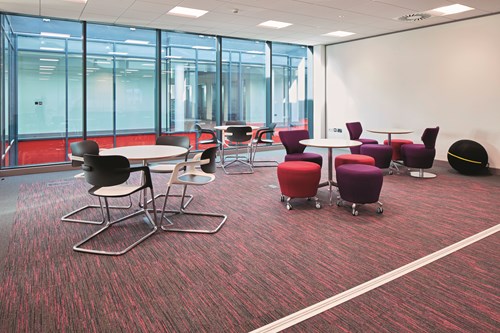THE construction industry operates within a linear economy of make, use, dispose. Education buildings are stripped out and torn down with astonishing regularity while new buildings are constructed from hard-won virgin materials. But raw materials are becoming scarce, and the demands for them are exploiting fragile ecosystems, even as the global demand for resources continues to rise.
The industry is said to demand over half the world’s extracted materials and generates around a third of the total waste generated in the EU, making it a prime candidate for applying the circular economy. Yet there has been little focus on how construction industry professionals and end users such as education professionals can contribute towards the new movement.
Much has been written about the concept but there are few working examples of a system which could change the landscape of education building projects.
A circular economy is one that is restorative and regenerative by design, and which aims to keep products, components and materials at their highest utility and value at all times, distinguishing between technical and biological cycles.
Paragon Carpets recently showed a real world case study with the Public Health and Education Wales project, a 4000sq m redevelopment over 5 floors of the well known public building completed without creating a large carbon footprint.
The principles of a circular economy have been applied to the built environment of Public Health Wales, where resources are said to be kept in use and their value retained.
The project proposes what Paragon Carpets describe as innovative concepts, showing how new business models can be applied to reduce capital expenditure and flooring lifecycle costs, providing a positive architectural legacy for future generations.
Environmental excellence isn’t the only mantra of this building project, Paragon says, a focus on exceptional design inspiring employee wellbeing and increased productivity was also key. Throughout the redesigned project bright colourways have been used within learning areas, and are said to encourage positive moods.
Contrasting colourways have been placed throughout transition areas of the building, aimed to aid wayfaring and movement of people by focusing the eye towards key entry and exit points.
To achieve this design without compromising the initial circular economy vision, reportedly only products from the Paragon Carpets collection, following stringent environmental and design guidelines were chosen.
All products are claimed to conform to BREEAM A+ ratings and were made in Britain in what Paragon calls the environmentally cleanest carbon emissions tile factory in the EU to ensure a low carbon footprint for the project.
Secondly all products reportedly had to be part of the Paragon3R product group. This was said to ensure any new material installed allowed for the old recovered tiles to be repurposed later in social housing schemes to increase lifecyle value and provide a second environmentally and socially responsible second usage.
Finally, colourways had to mix and correspond with carpet tiles left in the original design as part of the repurposing program therefore Paragon’s 300+ colourbank was said to be used to great effect. For this reason, Strobe, Diversity, Codec and Toccarre products proved to be ‘exceptional choices with dramatic results’, Paragon claims, created by mixing the ranges creating demarcation zones, breakout areas and wayfinding links within rooms.
www.paragon-carpets.co.uk


